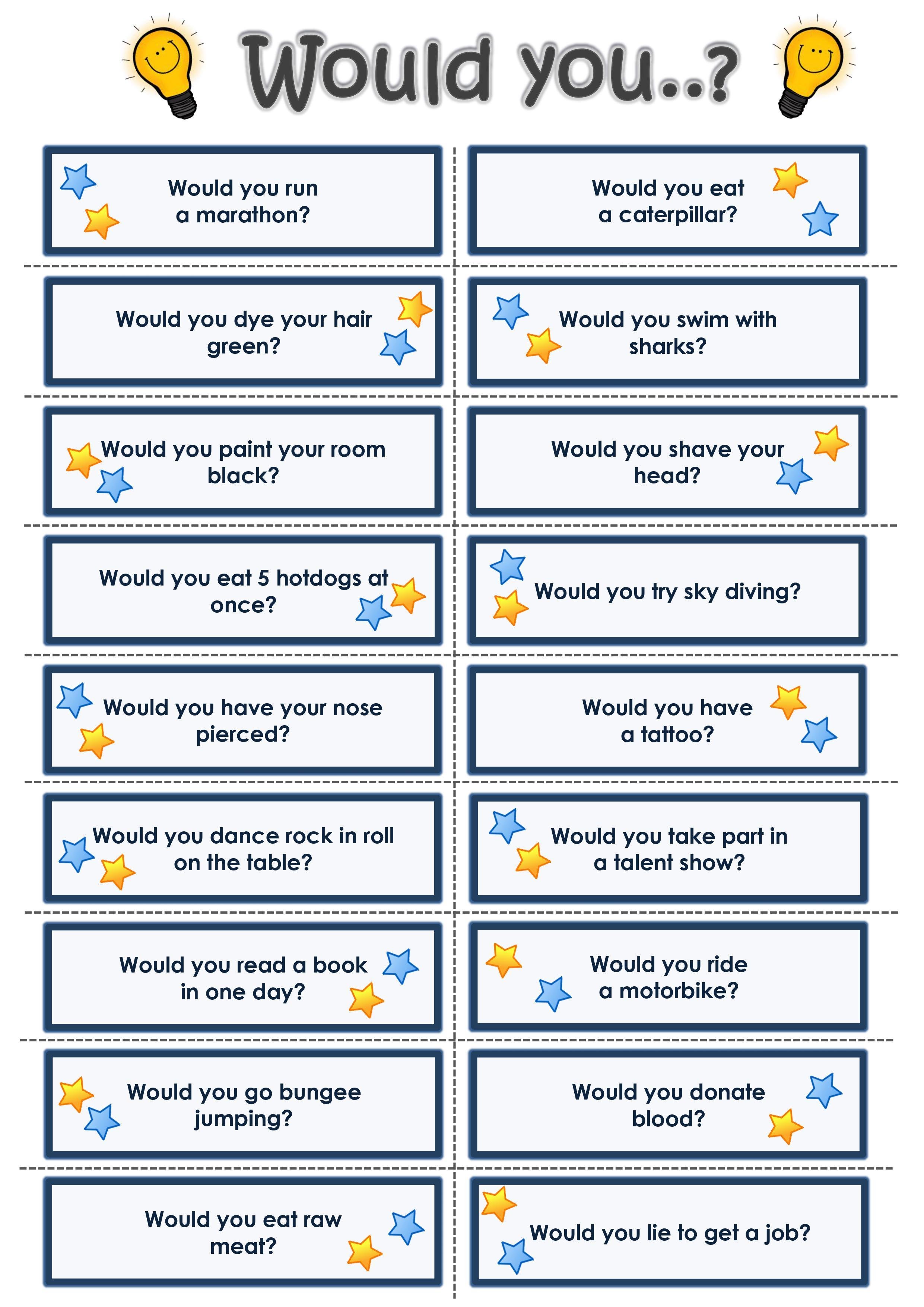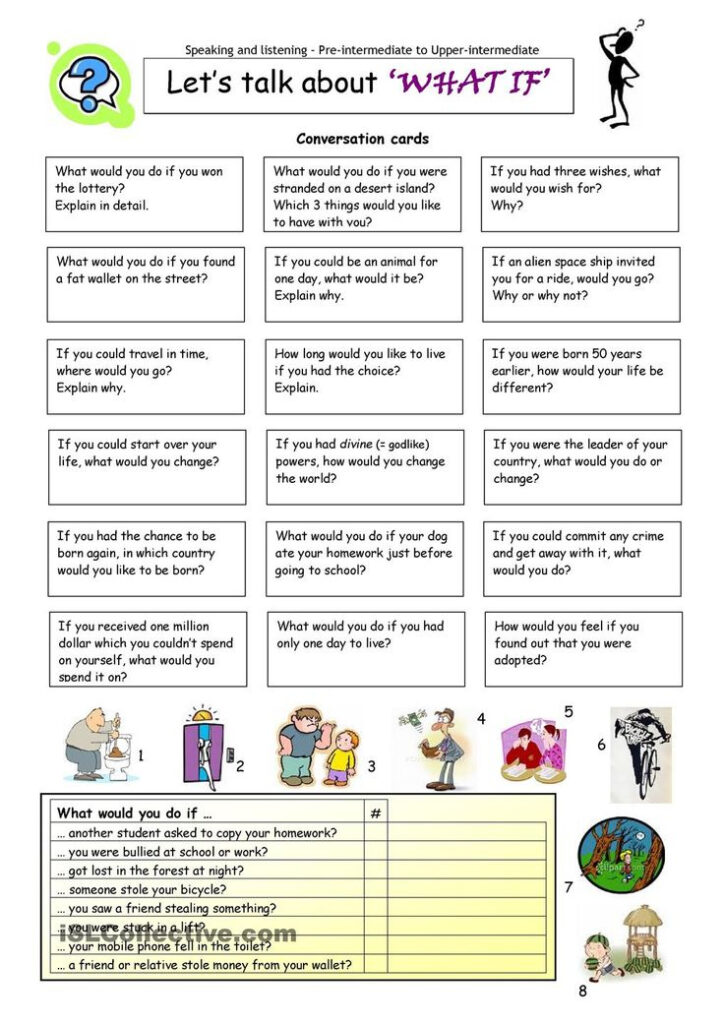
Unlocking Fluency: The Power of ESL Conversation Starters for Intermediate Learners Worksheets
For many English as a Second Language (ESL) learners, reaching the intermediate level can feel like both a triumph and a plateau. They’ve mastered basic grammar, built a foundational vocabulary, and can understand simple conversations. However, the leap from understanding to spontaneous, confident communication often remains a significant hurdle. This is where well-designed ESL conversation starters for intermediate learners worksheets become invaluable tools, bridging the gap between theoretical knowledge and practical application.
The Intermediate Plateau: A Common Challenge
Intermediate learners often find themselves in a unique position. They possess enough language knowledge to feel frustrated when they can’t express complex thoughts or participate fully in authentic conversations. They might hesitate, search for words, or resort to simpler phrasing, even when they know the more sophisticated vocabulary or grammar. This "intermediate plateau" can be discouraging, leading to a loss of motivation if not addressed effectively.

The primary reason for this stagnation is often a lack of sufficient opportunities for active, low-pressure speaking practice. While grammar exercises and vocabulary drills are crucial for building a linguistic foundation, they don’t simulate the real-time demands of spontaneous conversation. Learners need prompts that encourage them to think on their feet, formulate opinions, describe experiences, and engage in genuine dialogue. This is precisely the void that ESL conversation starters for intermediate learners worksheets are designed to fill.

What Makes Effective ESL Conversation Starters for Intermediate Learners Worksheets?

Not all conversation prompts are created equal. For intermediate learners, the effectiveness of a worksheet hinges on several key design principles:

-
Relevance and Relatability: Topics should resonate with the learners’ lives, interests, and potential future needs. This could include personal experiences, current events, future plans, ethical dilemmas, travel, technology, food, culture, or daily routines. When learners genuinely care about the topic, they are more motivated to express themselves.
-
Open-Endedness: The prompts must encourage more than just "yes" or "no" answers. They should invite elaboration, explanation, justification, and personal reflection. Instead of "Do you like to travel?", better prompts would be "What’s the most memorable trip you’ve ever taken, and why?" or "If you could travel anywhere in the world right now, where would you go and what would you do there?"

-

Scaffolding Vocabulary and Grammar: While the primary goal is conversation, effective worksheets often subtly introduce or reinforce target vocabulary and grammatical structures. This can be done through:
- Vocabulary Boxes: A small list of relevant words or phrases that might be useful for the discussion, perhaps with definitions or example sentences.
- Sentence Starters: Phrases like "In my opinion…", "I strongly believe that…", "One of the challenges is…", which provide a framework for expressing ideas.
- Grammar Focus: Prompts designed to elicit specific tenses (e.g., past perfect for experiences, future perfect for predictions) or conditional clauses (e.g., "If you had to choose…", "What would you do if…").


-
Variety of Question Types: A good worksheet will mix different types of questions:
- Personal Questions: "What’s your favorite way to relax?"
- Opinion-Based Questions: "Do you think social media has a positive or negative impact on society?"
- Hypothetical Questions: "If you won the lottery, what’s the first thing you would do?"
- Descriptive Questions: "Describe a challenging situation you’ve faced and how you overcame it."
- Comparative Questions: "What are the advantages and disadvantages of living in a big city versus a small town?"
-
Clear Instructions and Structure: Learners should understand exactly what they are expected to do. Worksheets can be structured for pair work, small group discussions, or even individual preparation for a class debate. They might include sections for note-taking, brainstorming, or follow-up questions.

Benefits for Learners: More Than Just Talking
The advantages of incorporating ESL conversation starters for intermediate learners worksheets into the learning process extend far beyond simply practicing speaking:
-
Increased Fluency and Spontaneity: Regular practice with varied prompts helps learners reduce hesitation and produce language more smoothly and naturally. They learn to retrieve words and grammatical structures more quickly.
-
Vocabulary Acquisition in Context: When new words are used in a meaningful conversation, they are more likely to be remembered and correctly applied. Learners also pick up idiomatic expressions and natural phrasing from their peers and the teacher.
-
Improved Listening Skills: Conversation is a two-way street. Learners must actively listen to their partners to understand their points, formulate responses, and engage in follow-up questions. This hones their receptive skills significantly.
-
Enhanced Critical Thinking and Opinion Formation: Many conversation starters require learners to analyze situations, weigh pros and cons, express personal beliefs, and justify their viewpoints. This develops their cognitive abilities in English.
-
Reduced Anxiety and Increased Confidence: Starting with structured prompts in a supportive environment can lower the pressure of spontaneous conversation. As learners succeed in expressing themselves, their confidence grows, encouraging them to speak more freely in less structured settings.
-
Cultural Understanding and Global Perspectives: Topics often touch upon cultural norms, global issues, and diverse perspectives, enriching learners’ understanding of the world while practicing their language skills.
Benefits for Teachers: Streamlining the Classroom Experience
For educators, these worksheets offer significant practical advantages:
-
Time-Saving Resource: Pre-designed worksheets save teachers valuable preparation time, allowing them to focus on facilitating the discussion and providing targeted feedback.
-
Structured Practice: They provide a clear framework for speaking activities, ensuring that all learners have the opportunity to participate and that the conversation remains focused and productive.
-
Easy Adaptability: Many worksheets can be adapted for different class sizes, levels (by adding more or less scaffolding), and time constraints. They can be used as warm-ups, main activities, or even homework assignments.
-
Engagement and Motivation: Engaging topics and interactive formats make learning more enjoyable, leading to higher student participation and motivation.
-
Diagnostic Tool: Teachers can observe learners’ fluency, accuracy, vocabulary use, and ability to formulate coherent thoughts during these activities, providing valuable insights for future lesson planning and individualized feedback.
Designing Your Own ESL Conversation Starters for Intermediate Learners Worksheets
While many excellent resources exist, creating your own worksheets tailored to your students’ specific needs and interests can be highly effective. Here’s a step-by-step guide:
-
Identify Target Areas: What vocabulary, grammar points, or functional language do your students need to practice? Are there specific topics they’ve shown interest in or areas where they struggle to express themselves?
-
Choose a Compelling Topic: Brainstorm themes that are relevant to your learners’ age, cultural background, and current events. Think about universal themes like happiness, success, challenges, future, technology, or travel.
-
Craft Open-Ended Questions: Start with broader questions and then develop follow-up prompts that encourage deeper discussion. Use question words like "What," "Why," "How," "When," "Where," "Who," "Which," "Describe," "Explain," "Compare," "Contrast," "Imagine if," "What would you do if."
-
Add Scaffolding:
- Vocabulary Box: List 5-10 key words or phrases related to the topic. Include synonyms, antonyms, or common collocations.
- Useful Expressions: Provide phrases for agreeing, disagreeing, expressing opinion, asking for clarification, or interrupting politely.
- Grammar Focus (Optional): If you want to subtly target a specific grammar point, frame some questions to naturally elicit that structure. For example, "What’s the most exciting thing you’ve ever done?" for present perfect.
-
Include Instructions and Structure: Clearly state whether it’s a pair work, group discussion, or individual preparation. You might include sections for "My Notes," "Partner’s Ideas," or "Class Discussion Points."
-
Consider Follow-Up Activities: What happens after the conversation? Could students summarize their partner’s opinions? Write a short reflection? Debate a point? This extends the learning.
-
Visual Appeal: Use clear fonts, adequate spacing, and perhaps a relevant image to make the worksheet inviting and easy to read.
Maximizing the Use of ESL Conversation Starters for Intermediate Learners Worksheets in the Classroom
Simply handing out a worksheet isn’t enough. Effective facilitation is key:
-
Pre-Activity Preparation:
- Introduce the Topic: Briefly introduce the theme to activate prior knowledge.
- Pre-teach Vocabulary: Go over any new or challenging vocabulary from the worksheet.
- Model the Activity: Demonstrate with a strong student or colleague how to respond to a prompt, including asking follow-up questions.
-
During the Activity:
- Group Formation: Arrange students into pairs or small groups (3-4 learners work well).
- Teacher as Facilitator: Circulate, listen, and offer quiet support. Avoid interrupting too much for error correction unless it hinders communication. Note down common errors for a post-activity review.
- Encourage Interaction: Remind students to ask follow-up questions, agree/disagree, and elaborate.
-
Post-Activity Wrap-Up:
- Whole Class Share: Bring the class back together. Ask each pair/group to share a few interesting points or conclusions from their discussion.
- Error Correction: Address common errors observed during the activity on the board. Focus on patterns, not individual mistakes that might embarrass students.
- Positive Reinforcement: Praise students for their effort, participation, and progress.
- Summarization/Reflection: Ask students to summarize the main points discussed or reflect on what they learned.
Common Pitfalls to Avoid
Even with great worksheets, challenges can arise. Be mindful of:
- Lack of Preparation: Rushing into an activity without pre-teaching vocabulary or clarifying instructions.
- Over-Correction: Constantly interrupting students to correct errors, which can stifle fluency and confidence.
- Monotonous Topics: Using the same types of questions or themes repeatedly, leading to boredom.
- Ignoring Shy Students: Not actively encouraging quieter learners to participate.
- Insufficient Time Allocation: Rushing the activity or not allowing enough time for meaningful discussion.
Conclusion
ESL conversation starters for intermediate learners worksheets are more than just sheets of paper with questions; they are carefully crafted tools designed to empower learners to break through the intermediate plateau and achieve true communicative competence. By providing relevant, open-ended, and scaffolded prompts, these worksheets foster fluency, expand vocabulary, enhance critical thinking, and build confidence. For teachers, they are invaluable resources that streamline lesson planning and facilitate dynamic, engaging classroom interactions. Embracing the strategic use and thoughtful design of ESL conversation starters for intermediate learners worksheets is a crucial step towards transforming hesitant speakers into confident, articulate communicators, ready to navigate the complexities of real-world English conversations.
